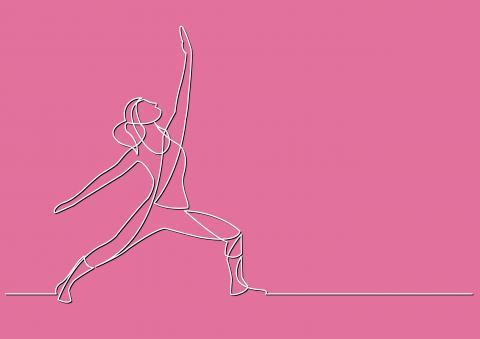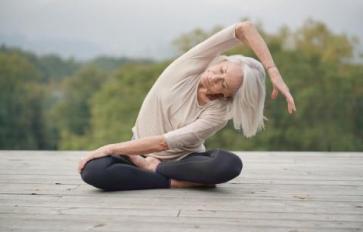
Flexibility is perhaps one of the most neglected areas of one's fitness regime. For many people, stretching is nothing more than a warm-up; and for fewer still, it mayalso be a cool-down. Consequently, this is the part many tend to exclude when they are pressed for time and need to squeeze in a quick workout.
Benefits of Stretching
Stretching can be a full-body workout all by itself. It is a great way to stay in shape, and actually keep the body younger. A flexible body is a relaxed body.
Reflexes are quickest when the body is relaxed. Flexibility also optimizes the muscles' range(s) of motion. This helps in more complex workouts or sports techniques that require the body to move beyond its normal range of motion: kickboxing or martial arts routines, for example.
Regular stretching also enables the muscles to take much greater loads and perform better than they would otherwise. Flexibility leads to higher jumps, longer leaps, bigger lifts, and so on -- faster strength gain in general.
Furthermore, stretching prevents stiffness and soreness. That is why a good stretch after a hard training session prevents, or at least reduces, the fatigue muscles and joints experience the following day. That is why stretching is a great active break on those non-workout days.
With age, the human body incrementally develops stiffness. Just how stiff one gets and how rapidly it happens varies from person to person, and is subject to many factors.
However, in everyone, stiffness leads to limiting the range of movement, unwanted aches and pains, and many other physical discomforts. Supple and agile muscles and joints keep the body young in the truest sense of the word.
How to Stretch
Approached the wrong way, even stretching can cause injuries. Even as a warm-up, stretching cold muscles is not a good idea. It can cause strains and tears.
On the other hand, done the right way, stretching benefits the body immensely – certainly far more than most people give it credit for. The secret lies in how it's done.
It is best to stretch when the body is slightly warm. Even before getting into a warm-up stretch, a minute or so of light jogging on the spot, or a few jumping jacks, or a slow-paced rope jump will raise your body's temperature enough to reap the greatest benefit from your warm-up.
For warming up, a dynamic stretch routine is ideal. This is where a stretching exercise would be repeated several times on each side, or alternating from one side to the other, and so on.
A stretching exercise is one in which the body moves into and out of a stretch for a number of repetitions. The pre-workout routine gradually prepares the muscles and joints for the heavier workload to come.
Static stretching is the type that has the greatest contribution towards increasing flexibility and really relaxing the muscles being stretched.
As the name suggests, this involves holding a stretch position only once, but for a longer time, before changing sides or moving on to the next stretch. Anywhere between 15 to 30 seconds is a good time to allow the muscles to relax, settle and lengthen.
Breathing plays a very important part in stretching, too. It is best to exhale when going into a stretch, and exhale while coming out of it. For dynamic, it is easy enough: just exhale while going into a stretch, and inhale on the way back.
For static stretching, it is important to not hold the breath while holding the stretch. Normal breathing should be maintained: a nice leisurely inhale, followed by a slower, more deliberate (but not forceful) exhale.
Mild tension should be felt in the muscles with each inhale, while trying to gently go beyond the current comfort zone (no more than just an extra inch or two). The exhale should relax that tension, with the body experiencing relief as the muscles which are engaged loosen up.
When to Stretch
The greatest gain in flexibility is achieved when the body is warm. A post-workout stretch session is best to that effect. At the time, the body is warmed up and the muscle fibers are most receptive to being stretched.
While the stretches increase flexibility, they also provide a great low-impact cool-down for the body after a high-impact training session; gradually lowering the temperature and heart-rate to normal levels.
As a stand-alone routine, early morning is a very good time to stretch. It is a great way to start the day, preparing the body and the mind for the day ahead.
The early morning stretch really fine tunes the body physically and mentally. Stretching is also a great way to unwind at the end of a tiring day. The controlled but continuous deep breathing during each stretch helps the mind relax, and relieves the body of the stiffness built up during the day.
Fitting 10 to 15 minutes of stretching into the day is an excellent supplement to any workout or sports routine, without interfering with the demands of the program. On its own, it is a great way to achieve health, harmony and relaxation in life.








